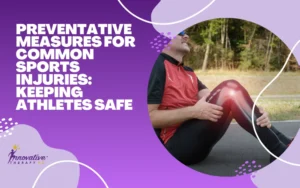I still remember the moment I pulled my hamstring during a sprint. It felt like a sharp snap at the back of my thigh, followed by instant pain and tightness. Hamstring strains are not just painful, they can seriously disrupt your daily life, workouts, or athletic performance. For me, even walking normally became a challenge in those first few days.
What really made a difference in my recovery was following a focused rehab plan built around proven methods. With the right mix of rest, movement, therapy, and nutrition, I was able to heal faster than expected. Real case studies like mine prove that fast recovery is absolutely possible when done the right way.
Understanding Hamstring Strains in Athletes

Hamstring strains are one of the most common sports injuries, especially in activities involving running, sprinting, or sudden acceleration. The hamstring muscles, located at the back of the thigh, are responsible for bending the knee and extending the hip. When over-stretched or overloaded, one or more of these muscles can tear partially or completely.
There are three levels of hamstring strain:
- Grade 1 (Mild): Minor muscle fiber damage with minimal strength loss.
- Grade 2 (Moderate): Partial tear with noticeable pain, swelling, and limited motion.
- Grade 3 (Severe): Complete muscle tear requiring a longer recovery.
These injuries often occur during high-speed movements and may be accompanied by a “pop” sound. Immediate symptoms include sharp pain, muscle tightness, bruising, and difficulty bearing weight.
Why Speed Matters in Muscle Injury Recovery
Acting quickly after a hamstring strain can significantly improve recovery outcomes. Delaying treatment may lead to increased scar tissue, reduced flexibility, and a higher chance of re-injury. Within the first 48 hours, it’s crucial to reduce inflammation and prevent further damage.
Key early actions include:
- Applying ice packs for 15-20 minutes every 2-3 hours
- Elevating the leg to reduce swelling
- Avoiding movements that aggravate the injury
- Using compression wraps or sleeves
Quick response not only accelerates healing but also preserves muscle integrity. In my case, I began treatment within hours, and that made a noticeable difference in my pain levels and mobility within the first week.
Key Principles of Hamstring Strain Rehabilitation
A structured rehabilitation plan is essential for a full and fast recovery. Whether you’re a pro athlete or a weekend jogger, following evidence-based rehab principles helps restore function and prevent re-injury.
Core Rehab Principles:
- Pain Management: Use cold therapy and rest initially, then transition to heat therapy.
- Progressive Loading: Gradually increase activity level and resistance.
- Stretching and Flexibility: Gentle hamstring stretches to restore muscle length.
- Strength Training: Target hamstrings, glutes, and core to rebuild support.
- Neuromuscular Control: Improve balance and coordination to avoid future injuries.
Staying consistent with these principles allowed me to regain strength while ensuring my muscle healed correctly.
Top Exercises for Hamstring Recovery
Once pain and swelling subside, targeted exercises become the cornerstone of rehab. These movements help restore strength, coordination, and function in the hamstring area.
Recommended Exercises:
- Isometric Hamstring Contractions
- Straight Leg Raises
- Glute Bridges
- Standing Hamstring Curls
- Eccentric Hamstring Slides
- Romanian Deadlifts (bodyweight or light resistance)
Performing these exercises under supervision or guidance from a physiotherapist can ensure correct technique and prevent setbacks.
Nutrition and Supplements That Help Healing

Nutrition plays a vital role in tissue repair and muscle recovery. During my rehab, I noticed faster results by making small but effective dietary adjustments.
Healing-Friendly Foods:
- Protein-rich foods (chicken, eggs, lentils)
- Omega-3 fatty acids (salmon, flaxseeds, walnuts)
- Vitamin C (oranges, strawberries, bell peppers)
- Zinc (pumpkin seeds, shellfish)
- Collagen supplements
Drinking enough water and avoiding inflammatory foods like sugary snacks or processed items also supports quicker recovery.
Real-Life Case Studies: Fast Recoveries Explained
Case Study 1: Amateur Soccer Player (Grade 2 Strain)
- Immediate rest and ice within 1 hour
- Began physiotherapy by day 3
- Returned to light training by week 3
- Full return to play in 6 weeks
Case Study 2: Gym Enthusiast (Grade 1 Strain)
- Used cold compression sleeves for 48 hours
- Focused on nutrition and hydration
- Performed gentle stretches by day 4
- Resumed workouts with modified routines by week 2
Case Study 3: Marathon Runner (Grade 2 Strain)
- Combined rehab with massage therapy and dry needling
- Introduced eccentric loading at week 2
- Returned to light jogging in 5 weeks
Mistakes to Avoid During Hamstring Rehab
Even with the best intentions, simple mistakes can delay recovery. Here are the most common errors I made or saw others make:
- Returning to activity too soon
- Skipping warm-up and cool-down routines
- Not following a structured plan
- Neglecting other muscle groups like glutes or core
- Using poor exercise form
Avoiding these mistakes can mean the difference between recurring injury and full recovery.
Timeline Expectations for Full Recovery
Recovery timelines vary based on the severity of the strain, rehab consistency, and individual body response.
| Injury Grade | Expected Recovery Time | Return to Sports |
|---|---|---|
| Grade 1 | 1–2 weeks | ~2–3 weeks |
| Grade 2 | 4–8 weeks | ~6–10 weeks |
| Grade 3 | 3–6 months | ~4–8 months |
Setting realistic expectations and tracking weekly progress will help you stay motivated throughout the process.
Tools and Equipment That Accelerate Recovery
You don’t need an entire gym to heal well. These simple tools can help speed things up:
Rehab Tools:
- Resistance bands
- Foam roller
- Compression wraps
- Hot/cold gel packs
- Stability ball
Using these items at home made my sessions more effective and kept me on track between physiotherapy appointments.
When to Seek Professional Physiotherapy Help

If your pain doesn’t reduce in the first few days, or if walking remains difficult after a week, it’s time to get expert help. I benefited greatly from seeing a sports physiotherapist who:
- Tailored a recovery plan specific to my injury grade
- Helped me avoid overtraining
- Used manual therapy techniques like massage and dry needling
- Monitored my progress objectively
Getting professional support not only speeds recovery but reduces long-term risk.
Expert-Approved Tips for Faster Healing
These tips helped me recover better and faster:
- Start rehab early but only after inflammation subsides
- Don’t ignore nutrition
- Track your progress weekly
- Incorporate mental health practices like mindfulness
- Sleep at least 7–8 hours daily to boost tissue repair
Staying committed to these simple steps can transform your recovery journey.
Final Thoughts: Patience, Planning, and Prevention
Recovering from a hamstring strain is not just about healing the muscle. It’s a full-body, full-mind process that requires dedication and smart planning. My journey taught me that every small step counts from icing on day one to gentle stretching and finally sprinting again without fear.
If you follow the right strategies, avoid shortcuts, and learn from real cases like the ones shared here, you’ll be back to your full potential faster than you think. Listen to your body, stick to the plan, and celebrate the progress, no matter how small.
Also Read:
- Causes Of Pelvic Pain In Women: Dallas, TX
- The Hip Joint Muscles – 3rd in a series on “Hip” Pain
- Complete Hip Pain Guide: Causes, Symptoms, Treatments
FAQs About Hamstring Strain Recovery
How long does it take to recover from a hamstring strain?
Mild strains may heal in 1–2 weeks, while more severe ones can take up to 3 months. Recovery depends on injury grade and rehab consistency.
Can I still walk with a hamstring strain?
Yes, but avoid overexertion. Walking should be pain-free. Use support or crutches if needed, especially for moderate or severe strains.
What are the best exercises to recover from a hamstring injury?
Start with gentle stretches and isometric exercises. Progress to eccentric hamstring movements and glute-focused training as pain subsides.
Should I use ice or heat for hamstring pain?
Use ice in the first 48 hours to reduce swelling. After that, apply heat to relax muscles and increase blood flow for healing.
How do I prevent future hamstring strains?
Warm up properly, build strength in hamstrings and glutes, and stay consistent with flexibility and balance training routines.





